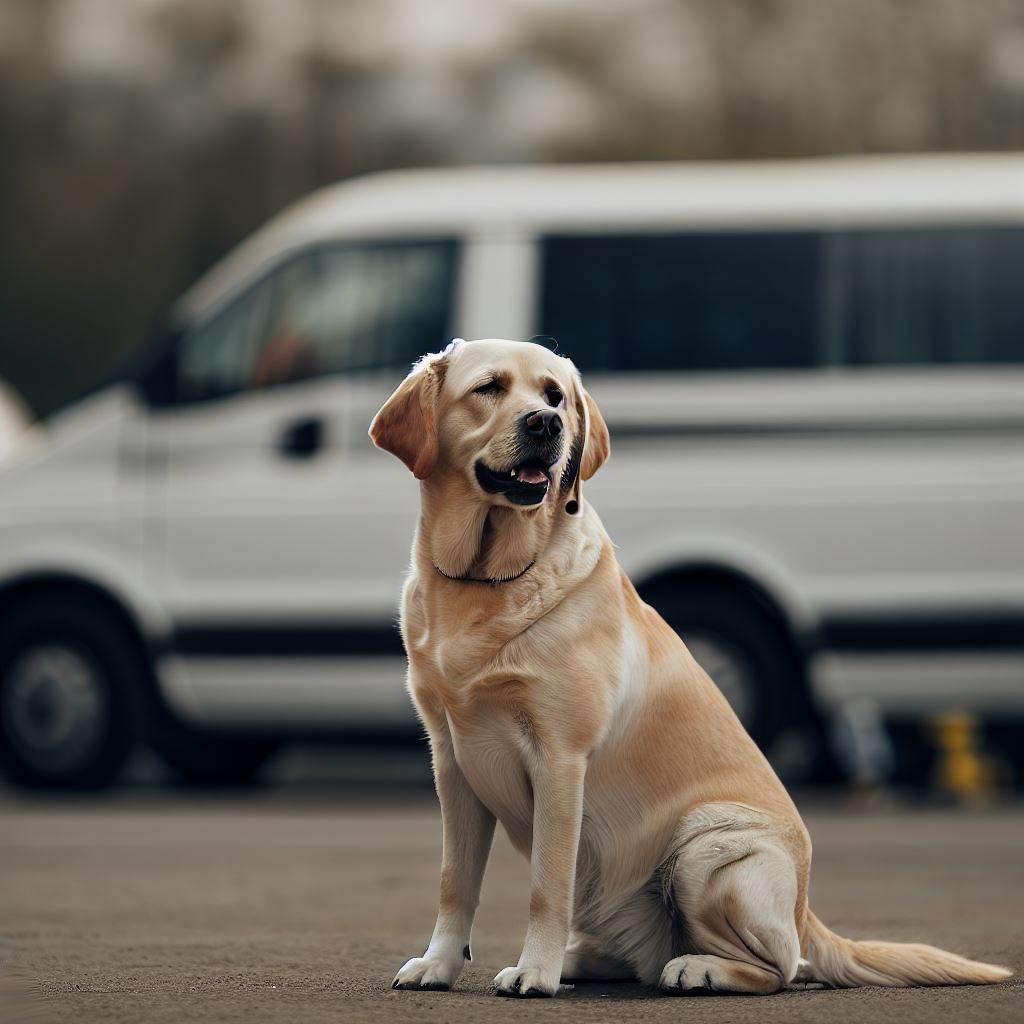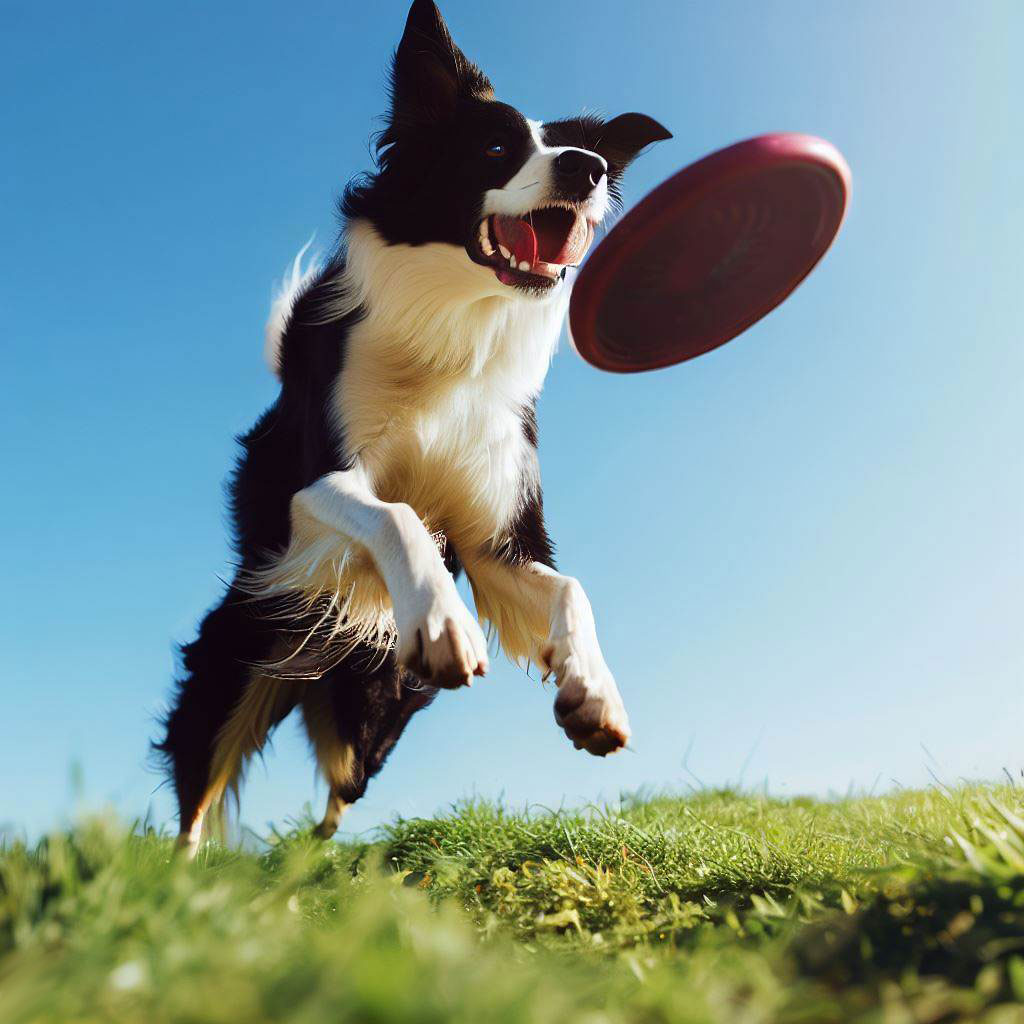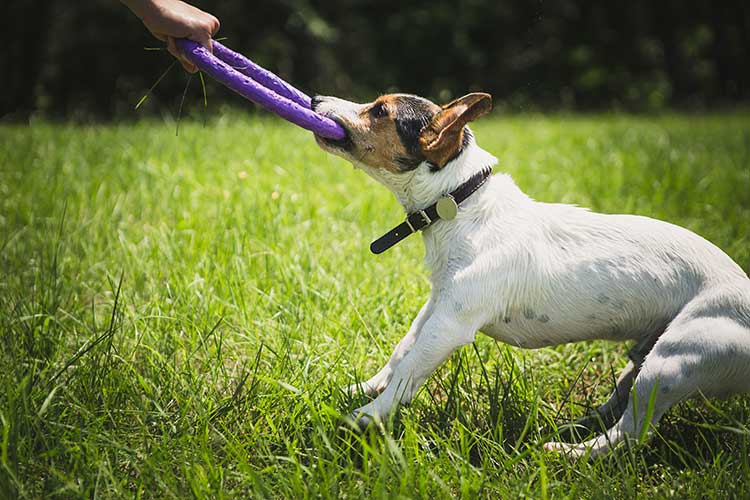How to Teach a Dog to Stay: Top Dog Training Tips unveiled. Master the art of canine command with expert techniques. Dive in now!
Table of Contents
Importance of the “Stay” Command
The “stay” command is an essential building block in a dog’s obedience training. Understanding how to teach a dog to stay is critical for any dog owner. The command instructs the dog to remain stationary, not just momentarily but until released by the owner. Its importance lies in safety, control, and building a harmonious relationship between the pet and the owner.
Think of a situation where you’re at a busy intersection or in a crowded place; knowing how to teach a dog to stay can prevent potential accidents or mishaps. It is a command that goes beyond mere obedience; it’s about responsible pet ownership.
Brief Overview of the Training Process
Teaching a dog the “stay” command is more than instructing them to remain still. It’s a systematic process that requires understanding, patience, and consistency. The training process for teaching a dog to stay can be quite intricate, and knowing the right steps to follow is crucial for success. Here’s an in-depth, step-by-step guide on how to teach a dog to stay:
- Position Your Dog: Initially, you’ll need to set the stage for success. Starting with the dog in a familiar and comfortable “sit” or “down” position helps in establishing the foundation for the “stay” command. You can gently guide your dog into these positions, ensuring that they are comfortable and relaxed. This first step is crucial, as it sets the tone for the rest of the training.
- Introduce the Command: Once your dog is in position, you’ll want to introduce the “stay” command. Use a clear and consistent verbal command or hand signal. You might choose to say “stay” firmly, accompanied by a hand signal like an outstretched palm. Consistency is vital here. Ensure that everyone involved in training uses the same words and gestures. This helps prevent confusion and promotes quicker learning.
- Start with Short Durations: The next step is to keep initial training sessions short and gradually increase the duration. Begin by asking your dog to stay for just a few seconds. Once they master that, you can slowly add more time. Patience is key in this stage, as some dogs may take longer to build up to longer durations. Gradually increasing the time reinforces the command and helps your dog understand what is expected.
- Reward Positive Behavior: This stage involves positive reinforcement with treats or praise, which can be very effective. Every time your dog successfully stays, reward them with a treat or affectionate praise like “good job!” or “well done!” This encourages the behavior and makes the training process more enjoyable for your dog.
- Introduce Distractions Gradually: As your dog becomes proficient and stays, it’s time to slowly add distractions. Start with mild distractions like a bouncing ball or a soft noise. As they master these, you can introduce more significant distractions like other people or animals. This stage is crucial for real-world application, as it ensures your dog can stay despite potential distractions.
- Practice Regularly: Repetition is vital, so make training a part of your daily routine. Consistent practice helps solidify the command and ensures that your dog doesn’t forget what they’ve learned. Even after your dog has mastered the “stay” command, regular practice helps maintain the behavior.
It’s essential to note that every dog is unique, and thus, the process of how to teach a dog to stay may vary. While some dogs may learn quickly, others may need more time and encouragement. That’s perfectly normal, and it’s crucial to progress at a pace that’s comfortable for your dog.
Importance from a Dog Specialist and Trainer’s Perspective
We can attest to the immense value in knowing how to teach a dog to stay. Let’s delve deeper into the multi-faceted benefits of this vital command:
- Safety: This command could literally save your dog’s life. It allows you to have control over your pet in potentially dangerous situations, such as near traffic or around other animals.
- Behavioral Control: Learning how to teach a dog to stay helps in managing and correcting undesirable behaviors. It lays the foundation for other commands and overall obedient behavior.
- Enhancing the Pet-Owner Relationship: Training fosters a bond between you and your pet. It facilitates communication and understanding, making cohabitation more enjoyable and less stressful.
- Physical and Mental Exercise: The training process engages both the mind and body, contributing to a healthy and balanced lifestyle for your pet.
- Adaptability: Once a dog stays and has mastered the “stay” command, it becomes adaptable to various environments and situations. Whether at home, a park, or a friend’s place, the command remains effective and useful.
Learning how to teach a dog to stay is not an overnight process. It requires time, dedication, and a positive approach. But the rewards are well worth the effort. It’s a skill that enhances every aspect of life with your canine companion, from daily routines to special outings.
In the world of dog training, there are few commands as universally important as the “stay” command. Its applications are as vast as its benefits, making it an indispensable part of a well-rounded training regimen.
Through a blend of professional insights and practical tips, this introduction offers a comprehensive and insightful guide on how to teach a dog to stay. It is designed to empower pet owners with the knowledge and tools needed to embark on this rewarding journey of teaching their dogs to stay, and in doing so, enriching the lives of both the pet and the owner.
What is the Best Way to Teach a Dog to Stay?
Understanding the Dog’s Behavior and Temperament
When considering how to teach a dog to stay, you must first understand your dog’s unique behavior and temperament. Every dog is different, and their training must be tailored to fit their individual personality and needs. Observing your dog and recognizing their signs of comfort, stress, or curiosity will allow you to align the training with their pace. Adapt the training techniques to match your dog’s energy levels and attention span, ensuring that they remain engaged and receptive.
Choosing the Right Training Environment
Selecting an appropriate environment is another crucial step in knowing how to teach a dog to stay. Initially, you should pick a quiet, familiar space free from distractions. As your dog progresses, you can slowly introduce new environments that are more challenging. The goal is to build your dog’s confidence and ability to “stay” in various situations. By carefully controlling the surroundings, you can set your dog up for success and gradually increase the complexity of the training.
Utilizing Positive Reinforcement
Positive reinforcement is key to any successful training, especially when learning how to teach a dog to stay. It’s essential to reward your dog for the desired behavior immediately, reinforcing the connection between the command and the action. Whether it’s treats, praise, or a favorite toy, find what motivates your dog. Consistent and immediate rewards help your dog associate the “stay” command with positive outcomes, making the training process more enjoyable and effective.
Breaking Down the Steps for Efficiency
Teaching a dog to stay is not a one-time event; it’s a process that requires breaking down into smaller, manageable steps.
First, you must get your dog into the desired position, such as a sit or down. Then, introduce the command using a clear verbal cue or hand signal.
Start with short durations and gradually increase the time and distance between you and your dog as they master the command. By breaking down the training into smaller, digestible parts, you make it easier for your dog to understand and follow the command.
This incremental approach enhances efficiency and ensures that your dog masters each aspect before moving on to the next.
Engaging Professional Assistance if Needed
Even with all the best practices, you may still encounter challenges in learning how to teach a dog to stay. In such cases, it’s wise to seek professional assistance from a qualified dog trainer.
A professional can assess your dog’s individual needs and customize a training plan and share some insiteful dog advice. They will guide you through the process, provide feedback, and address any specific challenges or concerns.
Engaging professional assistance can accelerate the training process and provide additional support and expertise. Whether it’s a one-time consultation or ongoing classes, professional help can make a significant difference in your dog’s training success.
The best way to teach a dog to stay involves a blend of understanding the dog’s behavior, selecting the right environment and employing positive reinforcement. Also very important is breaking down the training into efficient steps, and seeking professional assistance if needed.
Each element plays a vital role in creating an effective and enjoyable training experience. By following these guidelines, you can craft a personalized and successful plan on how to teach your dog to stay, fostering not only obedience but also a deeper bond and understanding between you and your beloved pooch.

What is the Dog Command to Stay?
Teaching Verbal Commands and Hand Signals
When embarking on the journey of how to teach a dog to stay, the foundation lies in your choice of verbal commands and hand signals. The word “stay” spoken firmly, paired with an extended hand, palm out, is the conventional command. It’s essential to ensure that both the verbal cue and hand gesture are consistent and clear for the dog to understand.
Some owners may prefer different phrases or even a clicker, but whatever method is chosen must resonate with the dog’s understanding and training. The right combination of sound and visual signals can make your instruction unambiguous, simplifying the learning process for your canine companion.
Consistency in Using the Command
Equally important in understanding how to teach a dog to stay is maintaining uniformity in the commands. Every time you ask your dog to stay, the same word, tone, and hand signal must be used. This consistent approach helps your dog recognize and respond more rapidly and with less confusion.
However, consistency is not only about your actions; it’s also vital that anyone involved in your dog’s life (family members, dog sitters, etc.) uses the same command. Consistency helps in reinforcing what the dog has learned, enabling quicker internalization of the command.
By ensuring that everyone who interacts with your dog uses the same cues, you pave a smoother path in teaching your dog to stay.
Reinforcing the Command with Practice
Learning how to teach a dog to stay isn’t a one-time affair; it’s a continuous process requiring consistent reinforcement through practice. The practice should begin in a controlled environment with minimal distractions. Gradually, as your dog gets more comfortable with the command, you can introduce more challenging situations, including distractions and different locations.
Repetition and positive reinforcement play crucial roles in cementing the command in the dog’s mind. Whether you use treats, praise, or a pat on the head, immediate rewards for the right response foster a positive association with the command.
Furthermore, integrating the command into daily routines can amplify the reinforcement. For example, having your dog stay before meals or while putting on their leash for a walk naturally incorporates the training into everyday life.
Through a well-rounded approach that includes carefully chosen verbal and hand signals, uniformity in command usage, and persistent reinforcement through practice, you can efficiently teach your dog the vital command to stay. It’s not just about telling your dog to remain in one spot; it’s about building trust, understanding, and clear communication between you and your beloved pet.

How Long Does It Take to Teach a Dog to Stay?
Factors Influencing Training Time
One of the most common questions that dog owners face when learning how to teach a dog to stay is the duration of the training process. It’s essential to understand that several factors can significantly influence this timeline.
- Individual Dog’s Temperament: Just like humans, dogs have unique personalities. Some may grasp new commands easily, while others might take a bit longer.
- Previous Training Experience: If the dog has prior experience with obedience training, they may learn new commands, including “stay,” more quickly.
- Training Method Used: The techniques and strategies utilized play a vital role. Positive reinforcement, for example, can often speed up the learning process.
- Frequency and Consistency of Training: Regular, consistent practice will generally lead to quicker results.
Typical Time Frames for Different Breeds and Ages
When figuring out how to teach a dog to stay, it’s useful to know that different breeds and ages might require varying amounts of time for training.
- Puppies: Generally, puppies can start learning basic commands, including “stay,” at around 8 weeks old. However, patience is key, as their attention spans are shorter. It might take a few weeks of daily training.
- Adult Dogs: An adult dog may take less time if they’ve already had some training. If they’re new to obedience commands, their learning curve might be similar to that of a puppy.
- Different Breeds: Some breeds are known for their quick learning and intelligence, such as Border Collies and Poodles. Others may take a bit longer but are just as capable of learning with the right approach.
Ongoing Reinforcement and Practice Lifestyle
Even after your dog has seemingly mastered the “stay” command, ongoing reinforcement and practice are crucial. This continuous effort ensures that the command is solidified in the dog’s repertoire and remains reliable in various situations.
- Daily Reinforcement: Incorporating the “stay” command into daily routines helps keep the command fresh in your dog’s mind.
- Challenging Situations: Gradually introducing more challenging situations can further solidify the training. For example, having your dog stay when there are distractions around.
- Regular Check-ins with a Trainer: If you’re working with a professional trainer, regular check-ins and sessions can help ensure that the training remains effective.
Understanding how to teach a dog to stay involves acknowledging that it’s not a “one-size-fits-all” process.
The time it takes can vary widely depending on several factors including the dog’s temperament, age, breed, and the consistency of practice.
Regular reinforcement and adapting the training to fit your specific dog’s needs can lead to a more successful and enjoyable experience for both you and your pet.

How Do You Train a Stubborn Dog to Stay?
Identifying the Causes of Stubbornness
Before diving into the methods of how to teach a dog to stay, especially if the dog is perceived as stubborn, it’s essential to understand the root causes of this behavior. What may appear as stubbornness might actually be a result of underlying issues.
- Lack of Understanding: Sometimes, the dog may not fully grasp what is being asked of them. This confusion can lead to what appears as defiance.
- Health Issues: If a dog is in pain or discomfort, they may resist training. A veterinary examination can rule out any underlying health concerns.
- Past Trauma or Fear: Past negative experiences or fears might cause a dog to resist certain commands or training techniques.
- Boredom or Lack of Motivation: If the training sessions are not engaging or rewarding enough for the dog, they might seem uninterested or stubborn.
Tailoring the Approach to the Dog’s Personality
Understanding your dog’s unique personality is crucial in figuring out how to teach a dog to stay, especially when dealing with perceived stubbornness. Here are some strategies to tailor the training to suit your dog’s character:
- Find the Right Motivators: Different dogs are motivated by various rewards. Whether it’s treats, toys, or praise, find what your dog loves and use it to your advantage.
- Adjust the Training Style: Some dogs respond well to energetic, playful training, while others might prefer a calm and gentle approach. Observe your dog’s reactions and adapt accordingly.
- Build Trust: Establishing a trusting relationship can make training more effective. Spend quality time with your dog and work on strengthening your bond.
Using Specialized Tools and Techniques
Training a dog that seems stubborn requires creativity in using specialized tools and techniques. Here’s how:
- Clicker Training: This method can be very effective in teaching precise behaviors. The clear sound of the clicker, followed by a treat, can help your dog understand exactly what is being rewarded.
- Training Collars or Harnesses: Some dogs might benefit from specialized training collars or harnesses that provide gentle guidance.
- Positive Reinforcement: Emphasizing rewards rather than punishments can create a positive association with the command to stay, making the dog more inclined to cooperate.
Professional Intervention if Required
Sometimes, despite your best efforts in learning how to teach a dog to stay, professional intervention might be necessary. This is particularly true for dogs that display extreme stubbornness or other behavioral issues.
- Behavioral Consultation: A dog behaviorist who specializes in dog care can assess your dog’s specific situation and create a tailored training plan.
- Professional Training Classes: Enrolling in a class with an accredited dog trainer might provide the structure and expertise needed to overcome the stubbornness.
- Ongoing Support: Regular sessions with a professional can ensure that progress is maintained, and any emerging issues are addressed promptly.
Training a dog that appears stubborn to stay is a complex task that requires patience, understanding, and the ability to adapt your approach to your dog’s unique personality and situation.
By identifying the underlying causes of the stubbornness, tailoring the training to suit your dog, utilizing specialized tools and techniques, and seeking professional help if needed, you can create a successful training experience.
It’s not about forcing compliance but building a partnership where both you and your dog are working towards the same goal.
What is the Difference Between Wait and Stay?
Definition of “Wait” vs. “Stay”
As a pet owner, it is important to understand the nuances of different commands and when to use them. One common confusion is the difference between the “wait” and “stay” commands. Though they may seem similar, understanding these differences is a critical part of how to teach a dog to stay or wait effectively.
- “Wait”: The “wait” command is used to instruct the dog to pause momentarily and hold its position. It is temporary and often used to manage the dog’s movement in short intervals, such as waiting at the door or before crossing the street. The dog understands that they will be released soon and can anticipate a new command or movement.
- “Stay”: On the other hand, the “stay” command is more formal and commands the dog to remain in a specific position, such as sitting or lying down, until released by a specific release word. It’s a command that requires the dog to maintain the position for a longer and undefined period without any anticipation of what comes next.
Practical Applications of Each Command
Both “wait” and “stay” commands have their unique applications, and using them in appropriate situations can lead to a more obedient and well-behaved dog.
“Wait”:
- At Doors and Gates: Teaching a dog to “wait” at doors and gates can prevent them from rushing out, potentially avoiding accidents.
- During Meal Times: Using “wait” before allowing the dog to eat can help in instilling discipline and calm behavior during meal times.
- Short Pauses During Walks: When crossing the street or encountering other dogs or people, “wait” can be a quick and effective command.
“Stay”:
- Longer Durations: If you need your dog to remain in one place for an extended period, the “stay” command is more appropriate.
- Emergency Situations: In situations where the dog’s safety is at risk, “stay” can be a life-saving command.
- Training and Obedience Classes: “Stay” is often used in formal training scenarios to demonstrate control and obedience.
Understanding these distinctions is the first step in training your dog effectively, so let’s now explore the sequential approach.
Sequential Training Approach
Training a dog to respond to both “stay” and “wait” commands can be achieved through a carefully planned and sequential process. Here’s how:
- Start with Basic Commands: Before diving into how to teach a dog to stay and wait, ensure that your pet has mastered basic obedience commands like “sit” and “down.”
- Introduce One Command at a Time: Begin with either “stay” or “wait,” but not both simultaneously. Teach one thoroughly before introducing the other to avoid confusion.
- Use Clear and Consistent Signals: Whether it’s a hand gesture, a verbal cue, or both, ensure that the signals for “stay” and “wait” are different and consistently used.
- Reward Positive Behavior: Positive reinforcement with treats, praise, or play is key to successful training. Reward your dog immediately when they respond correctly.
- Gradually Increase Difficulty: Start with short durations and minimal distractions, then slowly increase the time and introduce various distractions to reinforce the training.
- Utilize the Release Word: Train a release word such as “okay” or “free” to signal the end of the “stay” or “wait” command, but make sure it is distinct from other commands you use.
- Frequent Practice: Like any skill, frequent and consistent practice will solidify these commands in your dog’s repertoire.
This sequential approach helps in laying a strong foundation, but how do you integrate these commands into daily routines?
Integrating Both Commands into Daily Routines
Integration of “stay” and “wait” into your daily interaction with your dog ensures that these commands become a natural part of their behavior. Here’s how to do it:
- Use “Wait” at Meal Times: Before feeding, ask your dog to “wait” before diving into their food. This can instill patience and discipline.
- Employ “Stay” During Playtime: While playing fetch, for instance, you can use the “stay” command to make your dog hold their position before chasing the ball.
- Incorporate “Wait” When Leaving and Entering the House: Utilize the “wait” command to prevent them from rushing through doors, promoting safety and control.
- Apply “Stay” During Grooming or Veterinary Visits: Teaching your dog how to stay calm and remain in one position can be immensely helpful during grooming or check-ups at the veterinarian’s office.
- Combine with Other Training: Use both “stay” and “wait” in conjunction with other commands to create a well-rounded training routine, where your dog learns to respond to a variety of instructions.
By incorporating these commands into daily routines and activities, you not only enhance the effectiveness of the training but also build a stronger bond with your furry friend. It’s not merely about how to teach a dog to stay or wait; it’s about creating a harmonious relationship that allows both you and your pet to understand and respond to each other better.

Conclusion: How to Teach a Dog to Stay
Process of Teaching “Stay” on Cue
In wrapping up this guide on how to teach your dog to stay, it’s essential to revisit why this skill is so pivotal. Teaching your dog to “stay” isn’t merely a trick to show off; it’s a vital command that can protect your pet from potential dangers and promote a calm, controlled behavior in various settings.
The process of teaching “stay” involves a clear step that you, as the dog owner, can follow. Starting with a consistent command, either verbal or through hand signals, you gradually introduce the behavior with short durations and minimal distractions. As your dog begins to understand the command, you can increase the time, add distractions, and incorporate the training into daily routines.
Remember, the success in teaching a dog to stay lies in understanding the command’s importance, following a structured process, and, above all, having the right attitude and approach, which brings us to the next point.
Emphasizing Consistency, Patience, and Positive Reinforcement
Consistency, patience, and positive reinforcement are not merely words; they’re the core principles that fuel the success of how to teach a dog to stay. Let’s break down why each of these is so vital:
- Consistency: Dogs thrive on routine and clear, consistent signals. Whether it’s the words you use, the tone of your voice, or the hand gestures, maintaining uniformity helps your pet understand what you expect from them.
- Patience: Training doesn’t happen overnight. Sometimes, progress might seem slow, but that’s normal. Your dog is learning a completely new skill, and that takes time. Stay patient, and celebrate even the small victories.
- Positive Reinforcement: Encouraging good behavior with treats, praise, or affection makes the learning process enjoyable and effective. Rewarding your dog helps them associate the “stay” command with positive experiences.
These principles are not just applicable to teaching the “stay” command but are foundational to any dog training. Emphasizing them helps ensure that your training sessions are not only effective but also build a stronger, trust-filled relationship between you and your dog.
Encouraging Readers to Seek Professional Help if Needed
Lastly, while many dog owners successfully learn how to teach a dog to stay on their own, it’s not uncommon to face challenges. Every dog is unique, and some might require a more specialized approach.
If you find yourself struggling or feel that your dog’s behavior is unusually resistant to training, don’t hesitate to seek professional help. Accredited dog trainers have the expertise and experience to identify specific issues and tailor the training to your dog’s needs.
Seeking professional assistance is not a failure on your part; it teaches a responsible action that prioritizes your pet’s well-being. It’s about knowing when to ask for help and choosing the best path for both you and your furry friend.
Final Thoughts
Teaching a dog to stay is a multifaceted process that goes beyond mere obedience. It’s about communication, understanding, and mutual respect. This journey might be challenging at times, but with the right approach, tools, and attitude, it becomes an enriching experience that deepens the bond between you and your pet.
Keep in mind that the insights and techniques discussed here on how to teach a dog to stay are not just theoretical concepts but practical tools that you can apply today. Start with small steps, maintain a positive attitude, and enjoy the process. Your dog is not just learning from you; you’re also learning from them. And that’s what makes this journey so incredibly rewarding.
FAQ: How to Teach a Dog to Stay
Is it ever too late to teach a dog to stay?
No, it’s never too late to teach a dog to stay. Whether you have a puppy or an older dog, with the right approach and patience, you can successfully teach this command. Older dogs might require a bit more time and effort to unlearn old habits, but the principles on how to teach a dog to stay remain the same across ages.
What treats or rewards should I use when training my dog to stay?
When training your dog to stay, you should use treats or rewards that your dog finds particularly appealing. It can be a special treat they love or their favorite toy. The reward should be something that motivates them and reinforces positive behavior. It’s part of the fun and effective way on how to teach a dog to stay.
Can I teach multiple dogs to stay at the same time?
Yes, you can teach multiple dogs to stay at the same time, but it can be more challenging. Training multiple dogs requires you to manage each dog’s unique personality and learning pace. If you decide to undertake this, start with individual training sessions, and once each dog understands the command, gradually introduce training together.
How do I know if I’m using the correct command for stay?
The correct command for stay is consistent and clear. You can choose a verbal cue like “stay” or a hand signal. What’s important is that you use the same command every time. Consistency helps your dog understand what you expect and is a key factor in learning how to teach a dog to stay.
What should I do if my dog isn’t responding to the stay command with a leash?
If your dog isn’t responding to the stay command, whether on or off a leash, review your approach and consider the following:
- Are you consistent with your command?
- Are the training sessions too long or distracting?
- Is your dog physically and mentally ready for the training?
Reevaluate and adjust accordingly. If the problem persists, seeking professional help might be the best solution.
How often should I practice the stay command with my dog?
Practicing the stay command daily can lead to success. Short, frequent training sessions, ranging from 5 to 10 minutes, work best. Integrating the stay command into your daily routine and playtime makes it more natural for your dog to learn and remember how to stay.
Is the stay command necessary for all breeds of dogs?
Yes, the stay command is beneficial for all breeds of dogs. While some breeds may learn quicker than others, teaching stay is not about breed but about communication and control. It’s an essential command that can enhance your dog’s safety and well-being.
What are common mistakes in teaching a dog to stay, and how can I avoid them?
Common mistakes in teaching a dog to stay include inconsistent commands, moving too quickly through training stages, and lack of patience. Avoid these by:
- Using a consistent command every time.
- Gradually increasing difficulty, taking your dog’s pace into account.
- Remaining patient and positive, understanding that learning takes time.
Can the stay command be part of agility or obedience training?
Absolutely! The stay command is an integral part of both agility and obedience training. It helps in maintaining control and can be a starting point for various agility exercises. Understanding how to teach a dog to stay is foundational in these training disciplines.
How can I ensure the stay command is effective in different environments?
Ensuring the stay command is effective in different environments involves gradually introducing new settings and distractions. Start in a familiar place and progressively add new elements as your dog masters the command.
This gradual approach helps your dog generalize the stay command across different scenarios, solidifying your success in teaching them how to stay.
What is the dog command for stay?
The command for “stay” usually involves a verbal cue, such as saying “stay,” along with a hand signal, like a flat palm facing the dog. Consistency in using this command is key.
How long does it take to teach a dog to stay?
The time required to teach a dog to stay varies based on the dog’s age, temperament, and previous training, but typically, it can take anywhere from a few days to a few weeks with regular, consistent practice.
What is the lesson duration to teach any dog to stay?
The lesson duration to teach a dog to stay may vary, but typically, sessions should last around 5-15 minutes. Short, consistent lessons are more effective than long, sporadic ones.
Is a terrier able to sit and stay on cue?
Yes, a terrier, like most dog breeds, can be trained to sit and stay on cue with consistent training and positive reinforcement.
Is the stay command used in dog sports?
Yes, the stay command is frequently used in various dog sports such as obedience trials, agility, and rally obedience, where the dog must remain in a specific position until released.
What is the major step to teach any dog to stay?
The major step in teaching a dog to stay is introducing the command with a clear verbal cue and hand signal, followed by reinforcing the behavior with treats or praise when the dog complies.
Can you train a dog to stay on cue from a distance?
Yes, with progressive training and reinforcement, a dog can be taught to stay on cue even from a distance.
What is the furthest distance you can train a dog to stay?
The furthest distance a dog can be trained to stay depends on the dog’s training and focus but can extend to several yards or more with advanced training.
Apart from stay, what else can I teach a dog?
Apart from stay, you can teach a dog various commands like sit, come, heel, down, shake, fetch, and many agility or trick commands.
Is distance important to teach a dog to stay?
Distance is an essential factor when teaching a dog to stay, as it helps in gradually increasing the complexity and ensures that the dog obeys the command even when you move away.
How do I distance myself when I teach my dog to stay and wait?
Start by having the dog stay, then gradually increase the distance between you and the dog over time, reinforcing the behavior with rewards.
Is a treat important for a dog to stay, then release at a distance?
Treats can be a powerful motivator in training a dog to stay and then release at a distance, although praise and other positive reinforcements can also be effective.
What is the best release command?
The best release command is often a clear, consistent word like “okay,” “release,” or “free,” used every time you want your dog to move from the stay position.
Can I release a stay command at a distance?
Yes, you can release a stay command at a distance by using a clear and consistent release command that the dog recognizes, and it can be reinforced through training and practice.
Other common questions frequently asked when discussing ‘How to Teach a Dog to Stay’:
How to teach your dog to wait for a treat
To teach a dog to wait for a treat, use the “wait” command and hold the treat in front of them but don’t allow them to take it until you give a release cue, rewarding patience with the treat.
How to train your dog to come when called every time
Training a dog to come involves using a specific cue, like the dog’s name, followed by the word “come,” and rewarding positive behavior with treats or praise, combined with consistent practice.
How to teach a dog to lay down
Teaching a dog to lay down can be done by luring them into a down position with a treat and using a command like “down,” followed by rewarding them once they obey.
How to teach a dog to heel
To teach a dog to heel, use treats or a toy to guide them into walking beside you, use the “heel” command, and reward them for maintaining the position as you walk together. You read more in our article How to Teach a Dog to Heel.
How to teach a dog to shake
Teaching a dog to shake involves holding a treat in a closed hand, waiting for the dog to paw at your hand, saying the command “shake,” and then rewarding them with the treat. Eventually you remove the treat from the process, replace it with lots of praise, and the dog will beging to ‘shake hands’ on command.
How to teach a dog to sit
To teach a dog to sit, hold a treat above their nose, slowly move it over their head, causing them to sit naturally, then say “sit” and reward them with the treat.
How to teach a dog to wait for food
Teaching a dog to wait for food requires using the “wait” command as you prepare their meal, rewarding them only when they exhibit calm and patient behavior, reinforcing this command over time.
If you find yourself struggling to navigate the complexities of training your dog, fret not. Our article Best Online Dog Training Courses: Any Dog Will Love serves as a comprehensive guide. Highlighting the top 15 courses and zooming in on the top three, this resource aims to make your training journey seamless.









